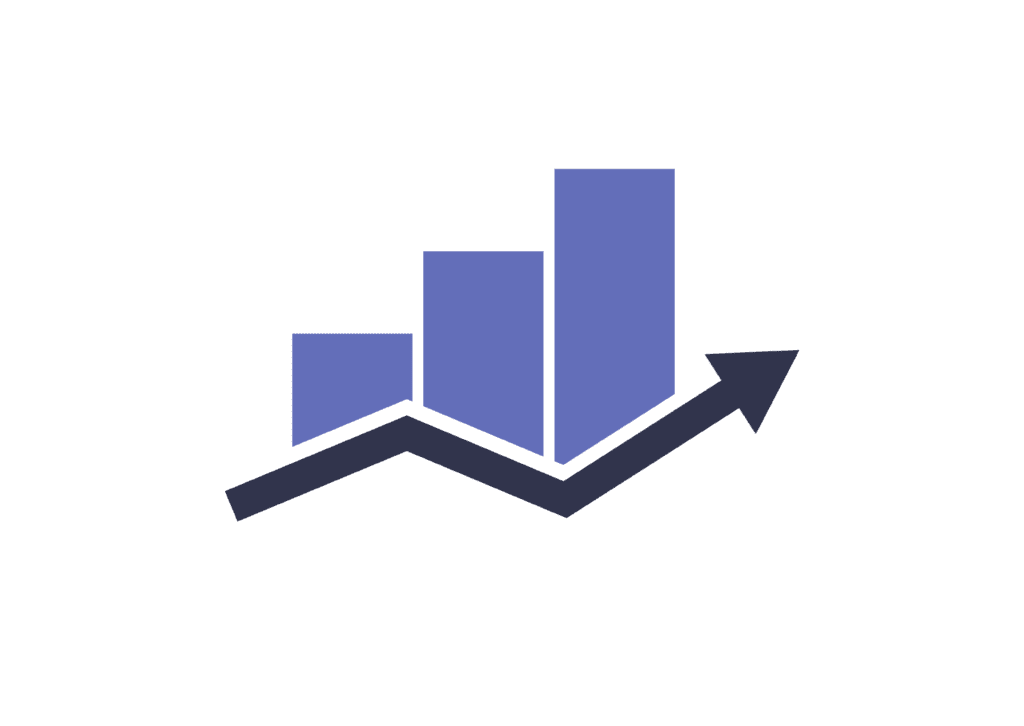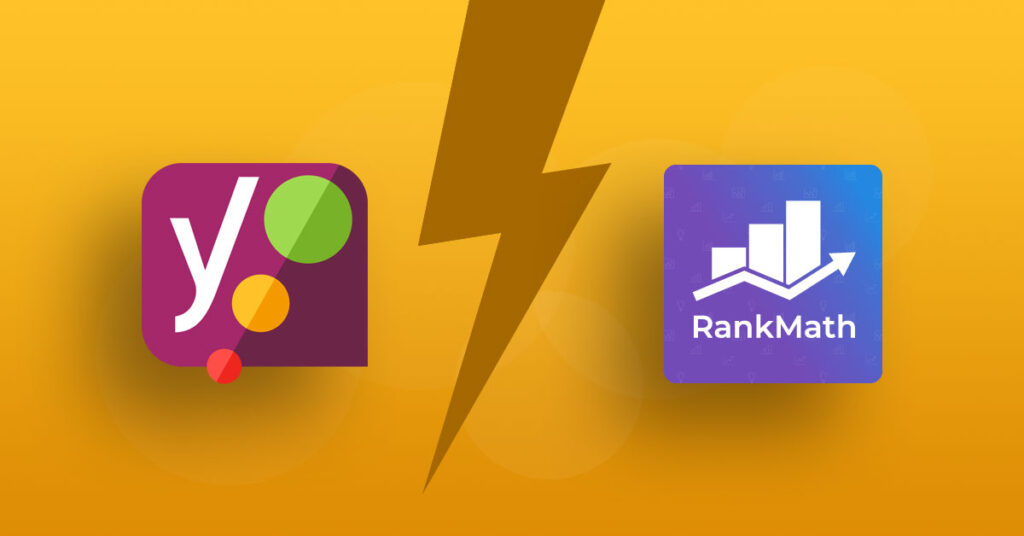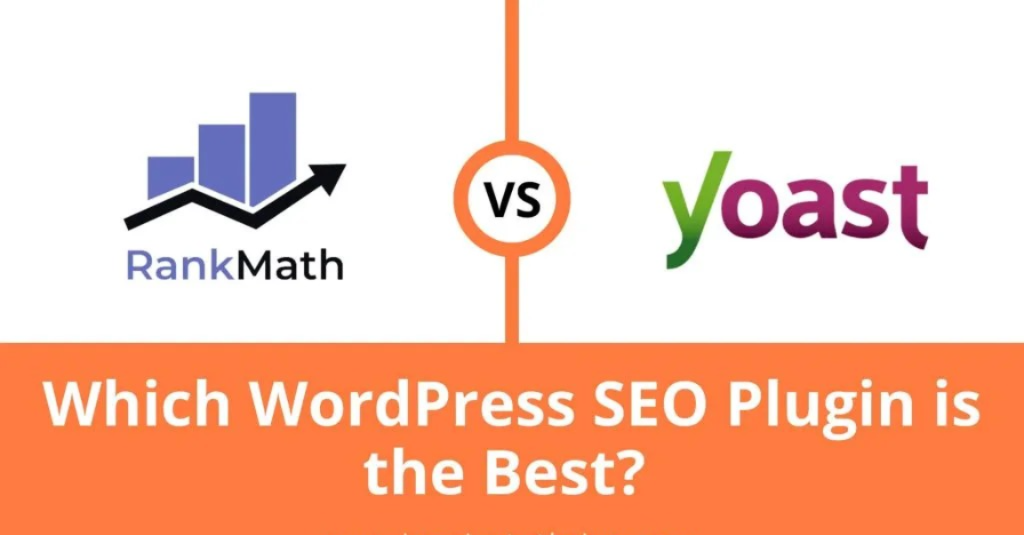Discover the ultimate comparison of Yoast vs Rank Math in 2025. Explore key features, pricing, pros & cons to choose the best SEO plugin for your WordPress site.
Introduction
When it comes to optimizing your WordPress website for search engines, having the right SEO plugin is non-negotiable. Among dozens of tools available, Yoast SEO and Rank Math stand out as the two most popular and reliable options. Both plugins offer powerful features designed to boost your site’s visibility, improve rankings, and simplify SEO tasks even for beginners.
But the question most website owners ask in 2025 is: Which one is better—Yoast or Rank Math?
In this blog, we’ll take a deep dive into Yoast vs Rank Math, comparing their features, ease of use, pricing, performance, and SEO capabilities. By the end, you’ll have a clear picture of which plugin suits your website’s needs the best.
Yoast SEO

Yoast SEO has been around since 2010 and is one of the most widely used SEO plugins in the world. Known for its user-friendly interface and content readability analysis, Yoast remains a favorite among beginners and professionals alike.
Key Features of Yoast SEO
- Content readability & SEO analysis
- XML sitemaps generation
- Schema.org integration
- Breadcrumbs control
- Internal linking suggestions (premium)
- Redirect manager (premium)
Yoast SEO — Overview & In-Depth Feature Breakdown
Yoast SEO has been a cornerstone of WordPress SEO since 2010. Trusted by millions, it’s prized for a beginner-friendly UI, actionable on-page suggestions, and a clean way to manage technical SEO without touching server configs.
Below, I’ll explain what Yoast does and dive deep into each key feature you listed — how it works, why it matters, and practical tips to use it well.
Yoast helps with two main things:
- On-page SEO and content quality — guiding you to write pages that are both user-friendly and search-engine friendly (keywords, meta tags, readability).
- Technical SEO tasks — auto XML sitemaps, schema output, canonical URLs, breadcrumbs, robots/meta rules, and (premium) redirect management.
It’s ideal for bloggers, small businesses, and publishers who want a sensible SEO workflow inside WordPress.
Key Features — In-depth analysis
1. Content readability & SEO analysis
What it does
- Provides a content checklist and a color-coded “traffic light” system (red/orange/green) to show whether the page meets best practices.
- Checks SEO elements: focus keyphrase presence, meta title & description length, slug usage, H1 presence.
- Readability analysis includes sentence length, paragraph length, use of transition words, passive voice percentage, subheading distribution, and Flesch Reading Ease score.
Why it matters
- Readability influences time on page and engagement signals.
- On-page SEO checks ensure your content targets a clear keyword and includes essential HTML elements.
How to use it (practical tips)
- Pick a clear focus keyphrase, but write naturally—don’t force the phrase everywhere.
- Aim for green lights, but prioritize user experience. A single slightly “orange” suggestion is OK if it improves readability or accuracy.
- Use the readability indicators to shorten long sentences and add transition words — this helps non-technical audiences and voice search.
2. XML sitemaps generation
What it does
- Yoast auto-generates XML sitemaps (usually at
/sitemap_index.xml) and updates them automatically as content is added. - Let’s you exclude specific post types or taxonomies from the sitemap.
Why it matters
- Sitemaps help search engines discover pages, especially new or frequently updated content.
- Automatic updates reduce maintenance overhead.
How to use it
- Submit the sitemap to Google Search Console and Bing Webmaster Tools.
- Exclude low-value pages (thank-you pages, admin pages) to focus crawl budget on important content.
3. Schema.org integration (structured data)
What it does
- Adds structured data (JSON-LD) to help search engines understand content type (Article, WebPage, Product, Organization, Person, etc.).
- Automatic output for posts, pages, breadcrumbs, and more; lets you pick site-wide defaults (Organization vs Person).
Why it matters
- Structured data is the foundation for rich results (rich snippets, knowledge panels, recipe cards).
- Improves the chance of enhanced SERP features, which boost CTR.
How to use it
- Configure site type (Organization vs Person) and add social profiles in Yoast → Search Appearance.
- For business pages and product pages, verify schema output using Google’s Rich Results Test.
- Combine with local/business plugins for the advanced LocalBusiness schema if needed.
4. Breadcrumbs control
What it does
- Yoast can output breadcrumb structured data and provides a function you can add to your theme to display breadcrumbs.
- It also configures how breadcrumbs are labelled and structured.
Why it matters
- Breadcrumbs help users navigate, and they often appear in SERPs, improving usability and clickthrough rates.
- Breadcrumb schema helps search engines understand site hierarchy.
How to enable a theme
Add this to a template (usually single.php or header.php) where you want breadcrumbs:
if ( function_exists('yoast_breadcrumb') ) {
yoast_breadcrumb('<p id="breadcrumbs">', '</p>');
}
Tip: Use a child theme or custom template so updates don’t overwrite your changes.
5. Internal linking suggestions (Premium)
What it does
- Yoast Premium analyzes your existing content and suggests internal link opportunities directly in the post editor.
Why it matters
- Internal linking helps distribute link equity, improves crawlability, and keeps users longer on site.
- Manual internal linking is time-consuming; Yoast speeds the process and surfaces relevant pages you may have forgotten.
Best practices
- Review suggestions and add links where they provide real value; don’t link for the sake of it.
- Use varied anchor text and link to cornerstone content to improve topical authority.
6. Redirect manager (Premium)
What it does
- Let’s you create redirects from the WP admin (301, 302, 410) and automatically prompts to set redirects when you delete or rename content.
- Supports bulk import/export and regex redirects in many cases.
Why it matters
- Prevents 404s and preserves SEO value when URLs change.
- Easier to manage than manually editing
.htaccessor using separate redirect plugins.
How to use it
- When moving or deleting pages, create 301 redirects to the new URL.
- Regularly audit 404 logs (Yoast can help track) and create redirects for valuable pages.
Additional Yoast capabilities worth knowing
- Canonical URL handling to reduce duplicate content issues.
- Social previews for Facebook and Twitter (custom title/description/image).
- Cornerstone content marking to prioritize the most important pages for internal linking.
- Bulk editor to quickly edit meta titles/descriptions across many posts.
- Multiple focus keywords (Premium) — useful but use sparingly; a page should have a primary focus plus related terms.
Limitations & realistic expectations
- Yoast’s checks are rule-based and can’t replace human judgment; they’re prompts, not absolute rules.
- Over-optimization risk: focusing obsessively on green lights can produce stiff copy. Always favor readability and user intent.
- Some advanced SEO tasks (technical schema setups, large-scale migrations, and advanced hreflang) will still require developer input or specialist tools.
Should you upgrade to Yoast Premium?
Consider Premium if:
- You want Redirect Manager and internal linking suggestions.
- You manage a large site and need multi-keyword optimization and enhanced support.
- You want “time saved” benefits (fewer manual redirects, faster internal linking).
Stick with free if:
- You’re a small blog or just getting started — free Yoast already covers most essential SEO tasks.
Quick practical checklist for using Yoast effectively
- Install Yoast and configure Search Appearance (site type, social profiles).
- Create/Register a Google Search Console property and submit a sitemap.
- For each page/post: set a focus keyphrase, craft an SEO title, and write a compelling meta description.
- Use readability suggestions to shorten sentences and add transitions.
- Mark cornerstone articles; add internal links between related posts.
- Use Redirect Manager (or an equivalent) when changing URLs.
- Test schema output with Google’s Rich Results Test.
Rank Math

Rank Math, often called the “SEO Swiss Army Knife,” entered the market in 2018 and quickly gained popularity. It offers more features in the free version compared to Yoast, making it highly appealing to bloggers, businesses, and agencies.
Key Features of Rank Math
Built-in keyword rank tracker (Pro)
Advanced on-page SEO analysis
Unlimited keyword optimization
Rich snippets & schema generator
404 error monitoring & redirection
Local SEO & WooCommerce SEO support
Rank Math – Overview & In-Depth Feature Breakdown
Launched in 2018, Rank Math quickly became a strong competitor to established SEO plugins like Yoast. Often called the “SEO Swiss Army Knife”, it provides a feature-rich experience right out of the box.
Unlike many plugins that reserve advanced tools for premium users, Rank Math includes most of its powerful features in the free version, making it highly attractive to bloggers, businesses, eCommerce stores, and digital agencies.
Rank Math’s setup wizard and intuitive interface make it beginner-friendly, while its advanced customization options appeal to professionals who want full control over their SEO strategy.
By offering flexibility, automation, and powerful integrations, Rank Math has positioned itself as one of the fastest-growing SEO plugins for WordPress in 2025.
Rank Math — In-depth analysis
1. Advanced On-Page SEO Analysis
Rank Math analyzes your content based on 40+ SEO factors and provides actionable recommendations. It helps you optimize titles, meta descriptions, headings, content length, keyword placement, and even readability — ensuring your pages are fully optimized before publishing.
2. Unlimited Keyword Optimization
Unlike Yoast, which allows only one keyword in the free version, Rank Math enables unlimited focus keywords. This makes it easier to optimize content for long-tail keywords and multiple variations — a huge advantage for ranking on Google SERPs in 2025.
3. Rich Snippets & Schema Generator
Rank Math comes with built-in schema markup support (FAQ, How-To, Product, Reviews, Local Business, and more). Adding structured data helps your website stand out with rich snippets, increasing CTR (click-through rates) and visibility.
4. 404 Error Monitoring & Redirection
The plugin tracks all 404 errors and allows you to set up 301 or 302 redirects directly from your WordPress dashboard. This feature improves user experience, prevents broken links, and helps retain SEO value.
5. Local SEO & WooCommerce SEO Support
Rank Math provides tools tailored for local businesses and online stores. It allows you to add local business schema, manage Google Maps integrations, and optimize product pages for better eCommerce visibility.
6. Built-in Keyword Rank Tracker (Pro)
For Pro users, Rank Math includes a keyword rank tracker that monitors how your keywords are performing on Google. This eliminates the need for third-party rank tracking tools, making it a one-stop SEO solution.
Why Rank Math Stands Out in 2025:
Its free version offers features that many competitors charge for, while the Pro version adds advanced tools for agencies and professional SEOs. With continuous updates, AI-powered suggestions, and integrations with Google Analytics 4, Rank Math continues to lead as a modern SEO powerhouse.
Yoast SEO Vs Rank Math – Features:

Gone are the days when Yoast was the only available or most reputable plugin for WordPress SEO. Some other SEO plugins are also available in the market with their free and paid versions that are compatible with the Yoast; Rank Math is one of them.
Here, we will not give you an estimate of who wins or loses among them, but we will explain some key features of both so that you can choose one that best fits your needs.
So, let’s start with the most desired section in this comparison list – The Features. Which points or benefits do individual plugins provide, and what makes them so popular?
In a nutshell, Rank Math offers more free features than Yoast, but this doesn’t make it a better choice; those extra features could make it more useful than Yoast.
Yoast VS Rank Math – Feature Comparison
| Feature | Yoast SEO | Rank Math | Winner |
| Free Keyword Optimization | 1 Keyword | Unlimited Keywords | Rank Math |
| Schema Markup | Basic (manual setup) | Advanced (auto schema) | Rank Math |
| Content Readability | Strong & Detailed | Decent but less strict | Yoast |
| User Interface | Beginner-Friendly | Modern & Feature-rich | Tie |
| Redirect Manager | Premium only | Free | Rank Math |
| WooCommerce SEO | Premium | Free + Advanced | Rank Math |
| Pricing | Higher (Premium) | More Affordable | Rank Math |
So, let’s jump in towards a detailed comparison of Yoast vs rank math to know which one provides more features and ease in usability.
1- Quick introduction:
Yoast was launched in 2010 by Joost de Valk, an SEO consultant so obsessed with WordPress that he built multiple small plugins that resulted in the major one, Yoast. Undoubtedly, Yoast is the most popular plugin nowadays. It would not be a bad idea if we said that Yoast had become a synonym for SEO, with active users of 5 million till now.
On the other hand, Rank Math was launched in 2018 and developed by a team in MyThemeShop. This means it is comparatively new in the world of SEO, but it has soon built its worth in the market and is now becoming the second most popular SEO plugin with active users of 800 thousand to date. Well, from zero to 800thousands users to date is pretty much fascinating.
2- User Interface:
Since we are talking about the key comparisons between Yoast and Rank math SEO, comparing their user interface and ease of use means a lot. So, let’s find out all those points that would make a tool more effective for you, and you will understand which will come up to your requirements.
You can access the features of Yoast by finding the option underneath the editor or in the sidebar of your post (depending on whether you are using a block editor or not). Moreover, the Yoast features are divided into four sections: SEO, readability, Schema, and social, where you can set every section of it in an individual post. You need to click on these options and grab the opportunity. With that, you can easily preview your content to check how it will look to the users.
Access the Rank Math by clicking the settings in the right side toolbar, whereas the settings section is divided into four parts: general, advanced, schema, and social. Moreover, you would also get an estimate of how much your post is optimized (ranging from 0 to 100%) for the individual keyword. Interestingly, it doesn’t matter whether you have a paid or free version of Rank Math; you would still be able to get the traffic statistics against a post on that page.
3- Pricing:

One of the key factors influencing your decision is its pricing – after all, you need to consider whether it suits your budget or not.
Yoast SEO costs around $99 per year for a single site. You will get the option of multiple keyword analysis, suggestions for internal linking, the preview of post Meta title and description for social media, and much more. Moreover, another premium offer that Yoast offers is SEO for WordPress video, where you can also get a 5% discount on purchasing a Yoast subscription for 5 sites, where you can also increase the purchase for more.
On the other hand, the math premium package starts at $59, and the business plan is up to $100. It’s quite substantial to analyze the price difference as they offer a 500 keyword analysis limit for the pro package and 10k for the business package. Not only this, but you can also add multiple sites to it, whereas, of course, priority support will always be provided to the business users.
Yoast Vs Rank Math – Which One is the Best?

Conclusion: Yoast vs Rank Math – Which One Should You Choose?
Both Yoast SEO and Rank Math are powerful WordPress SEO plugins, each catering to different types of users.
- If you are a beginner who values simplicity, stability, and proven performance, Yoast SEO remains a solid choice. Its content readability analysis and long-standing reputation make it a trusted plugin for millions of websites.
- If you’re looking for feature-rich SEO tools without paying extra, Rank Math is the clear winner. With advanced keyword optimization, rich snippets, and WooCommerce SEO built in, it offers more flexibility, especially for bloggers, businesses, and agencies.
The ultimate decision depends on your goals. For basic SEO and content writing support, Yoast is sufficient. For scalability, advanced SEO control, and cost-effectiveness, Rank Math is the better option.
At the end of the day, the best SEO plugin is the one that aligns with your website’s needs and long-term strategy.
Well, Yoast vs. Rank Math – this topic is quite subjective and contradictory as you dive deeper into it, so you must choose for yourself to understand which one will work for you. Moreover, you can also try both to find out which one worked for you.
Ending up with a note – achieve your SEO goals and save time by getting any of the plugins because they are ultimately made to help you and create ease in your SEO journey. Do write in the comment section which one you have tried already and how you found it.
Would love to hear about your experiences!
FAQs
Which plugin is better for beginners, Yoast or Rank Math?
Yoast is more beginner-friendly with simple readability analysis, while Rank Math offers advanced features out of the box. Beginners may prefer Yoast, but Rank Math is great if you want more control.
Does Rank Math really offer more features for free than Yoast?
Yes. Rank Math includes advanced features like multiple keyword optimization, rich snippets, and 404 monitoring in its free version, which Yoast usually offers only in its premium.
Can I switch from Yoast SEO to Rank Math without losing my SEO data?
Yes. Rank Math offers an easy import tool that allows you to transfer your SEO settings and metadata from Yoast with just a few clicks.
Which plugin is better for eCommerce SEO?
Rank Math has built-in WooCommerce SEO features in its free version, while Yoast requires an additional paid WooCommerce SEO add-on.
Is Yoast or Rank Math better for website speed and performance?
Rank Math is generally lighter and optimized for performance, but Yoast is stable and reliable. The speed difference depends on your hosting and overall site setup.
- Best Visual CSS Live Editor Plugins for WordPress (2025 Update) - September 9, 2025
- Benefits Of Improving Your Web Design (2025 Updated Guide) - September 9, 2025
- How to Add Custom Fonts in Elementor Free | 3 Step Guide Using a Plugin|(2025 update) - September 8, 2025








1 Comment